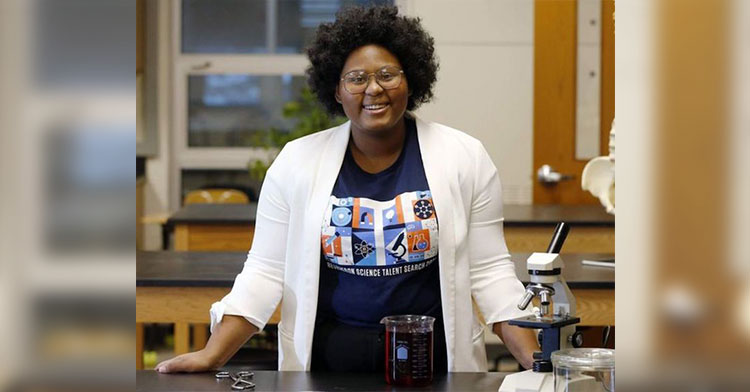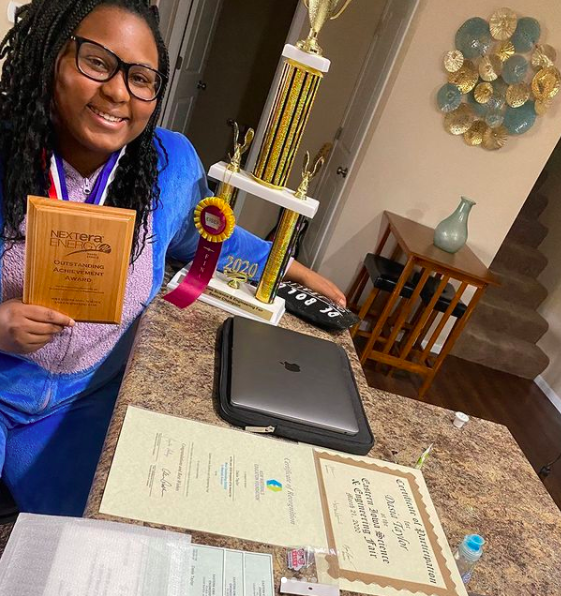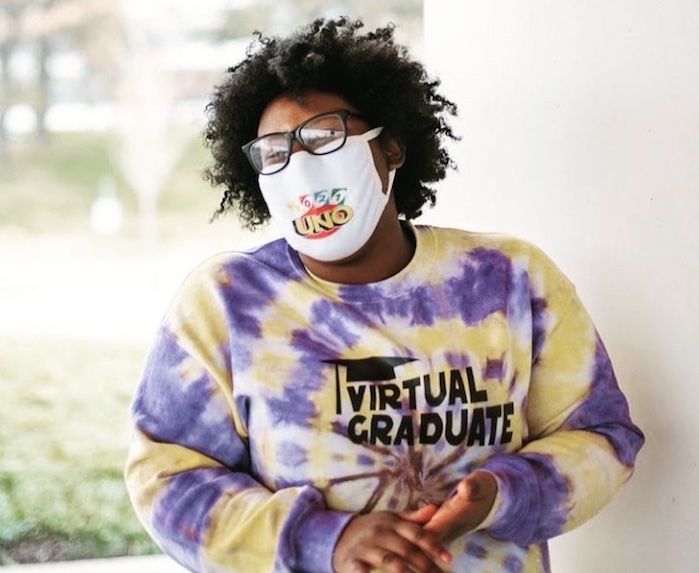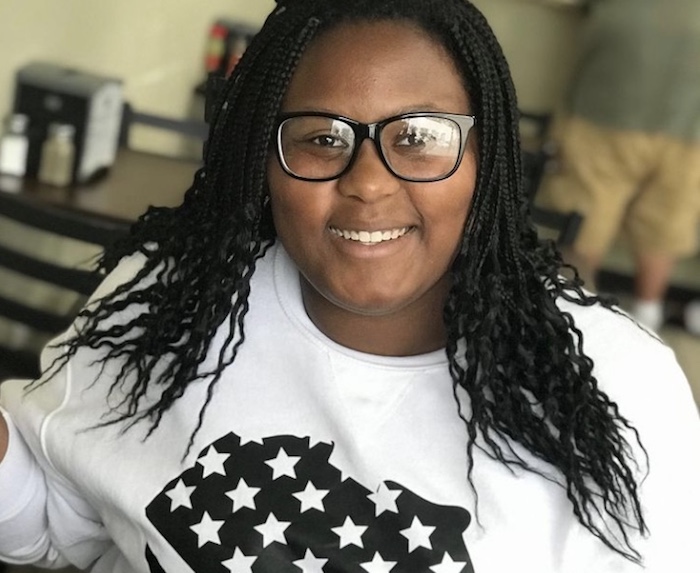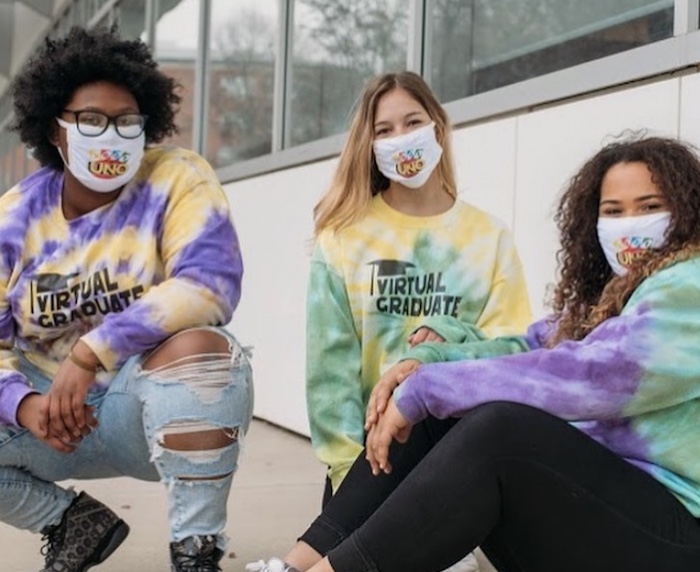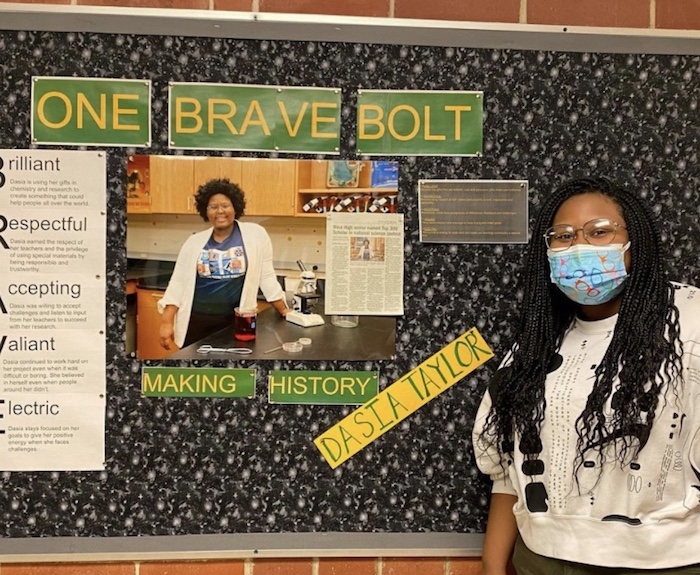A 17-year-old student in Iowa City has set out to change low-income medical care – one beet at a time!
Videos by InspireMore
Since October 2019, Dasia Taylor, a student at Iowa City West High School, has been working tirelessly toward her goal of inventing color-changing sutures that can detect infections. It all began when her chemistry teacher informed her class about the prestigious science fairs in their state. From that moment on, Dasia made it her mission to sweep the competitions and change the world.
A while back, Dasia read about technologically-advanced sutures that could alert a smartphone if an infection was detected. The invention immediately caught her attention but led her to a follow-up question: What about people without smartphones?
“That’s really cool,” Dasia told The Washington Post, “but the people that are really going to need these sutures and know when their wounds are infected, they won’t be able to afford this technology.”
With an extensive background in racial equity work at her school and in her community, Dasia always approaches her ideas through a lens of both equality and universal accessibility.
“I consistently classified my project as where equity meets science,” Dasia added. “When you’re doing research like this, you have to think about the lives you’re going to impact … you have to make sure the people you’re affecting, they will be able to have access to it.”
So she immediately got to work on an alternative solution that could help people in low-income communities access the same level of infection prevention.
The World Health Organization reports that 11 percent of patients who have surgery in low- and middle-income countries end up with infections, and 20 percent of women in Africa who have C-sections contract infections. Dasia was deeply moved by these statistics, and they added even more fuel to her fire.
When she first began her research, she investigated the pH levels of human skin, which is acidic by nature. What she found was that healthy skin sits at a pH of around 5, but when an infection is contracted, it raises to a pH of about 9.
To get around tech-based sensors, Dasia focused on fruits and vegetables, many of which naturally change colors at varying pH levels. There was one candidate that rose above the rest: beets. Beet juice changes from bright red to a dark shade of purple at a pH of 9, which was exactly what Dasia’s research called for.
Next, Dasia needed to find the perfect thread for her sutures. She discovered her winner in a cotton-polyester blend. When it was exposed to infection, this thread held the dye and turned from bright red to dark purple within five minutes. Then after three days, it faded to a light gray.
“All of these things were happening, and I was like, OK, this is amazing, my guesses were right,” Dasia said. “This is really a game changer.”
In January, she and her invention made it to the big leagues! Dasia was named one of the top 40 finalists in the 2021 Regeneron Science Talent Search, and the group of young innovators voted Dasia as the winner of the Seaborg Award.
“To get to the top 40, this is like postdoctoral work that these kids are doing,” Maya Ajmera, president and CEO of the Society for Science, said.
Though she clearly excels in science, Dasia is quick to mention that she has her heart set on more than one goal in one industry.
“I’m a firm believer in not letting one field of study consume me, and that is explicitly due to intellectual curiosity,” Dasia said.
She plans to follow her curiosity to a degree in political science from Howard University and an eventual career as a lawyer. We have no doubt that her brilliant mind, fiery ambition, and passion for equality will land her in any room anywhere!
Along the way, she hopes to patent her sutures and put them into action where they’re needed, but she knows she still has work ahead of her. Using the feedback she has received from the judges and her mentors, chemistry teachers Carolyn Walling and Michelle Wikner, she will make her invention the best it can be to help the highest number of people possible.
“I am looking forward to seeing how Dasia uses this project moving forward,” said the president and CEO of Society for Science. “And on a long-term scale, I’m really interested in watching what problems she is going to continue to solve, to make the world a better place.”
So are we! Watch her competition finalist video below, and share this inspiring story of passion and innovation today.
Want to be happier in just 5 minutes a day? Sign up for Morning Smile and join over 455,000+ people who start each day with good news.


